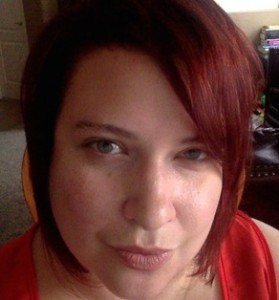Tips When Writing Multiple POV Novels
Today YA author Lisa Gail Green is here to offer some thoughts on writing multiple POVs. This is a route some authors go, but handling more than one protagonist is not easy. Lisa’s latest novel features dual POVs, so the lessons she learned are fresh in her mind. Please read on! When starting a new manuscript, point of view is an important choice. Who is the best person to tell your story? Sometimes the answer includes more than one character, and that means multiple POVs.
When starting a new manuscript, point of view is an important choice. Who is the best person to tell your story? Sometimes the answer includes more than one character, and that means multiple POVs.
First things first: figure out the purpose behind your choice. If you want to write multiple POVs, you should always have a dang good reason for it.
 When I started writing SOUL CROSSED, I knew using dual POVs was the perfect way to help build sympathy for both my Demon and my Angel. Readers would understand the thought processes of each MC as well as see how each interpreted the world differently and why. For me the choice was a great tool to plant the seeds of my theme: is there pure good and pure evil?
When I started writing SOUL CROSSED, I knew using dual POVs was the perfect way to help build sympathy for both my Demon and my Angel. Readers would understand the thought processes of each MC as well as see how each interpreted the world differently and why. For me the choice was a great tool to plant the seeds of my theme: is there pure good and pure evil?
Another great reason for multiple POVs is that each compliments two or more story arcs that intersect at a later point. If this is the case, you have to make sure both arcs are truly necessary for your overarching story. Look at backstory with the same lens. How much is truly needed and when does the reader need those specifics?
Now that you’ve defined the purpose and benefits of multiple POV’s, it’s time to get to work. Here’s the challenge: when you have dual POVs, you have two internal arcs to plot and the decision of what scene is in whose point of view. Lets look at some rules you’ll want to follow.
Make sure each character has a distinct voice.
1) Does this character use certain anachronisms or speech patterns? What is his/her educational level? Does he/she think in phrases or complex sentences?
2) What senses does this character use the most? Pick those out for use with descriptions.
3) Get inside his/her head. Use some character building exercises if you need help. Look up some theatrical ones and try those too.
Understand each character’s goals, stakes, and pitfalls.
Make sure each POV character (really all characters) have a specific goal and obstacles that keep him/her from that goal. Ask yourself in each scene whether he/she is acting toward that goal, what’s at stake, and what’s in the way.
Don’t redo the same scene from multiple POVs.
Full disclosure: I break this rule once in SOUL CROSSED. I did it for all of maybe a page, and I did it purposefully because it was important to understand when Josh and Grace came together what was happening in each character’s head. I also wanted to highlight this moment for readers and slow it down so I used this as a device.
Overlapping POV in scenes is a real temptation. As the author, you know they’ve each seen something different or had a different reaction to the same scene, and you want to share it with your audience. Resist, unless you have a VERY good reason, like I did. Instead, pick the POV that gives the important info to your reader and use that. Believe me, it gets really tired if you don’t move forward with a story. Each chapter should build on the last.
Have a reason a particular chapter is in a particular point of view.
Why did you choose this character to tell this part of the story? Does he have a crucial piece of info to reveal? Does she reveal something deep about her character when confronted in this scene? If you don’t have a reason, go back and make sure there’s a purpose for the scene itself.
Ground the reader as soon as each switch takes place.
The last thing you want is for the reader to be confused about whose head she’s in. So make sure you give clues right away with setting and internal dialogue before you jump in.
I used names as chapter titles to help indicate who was speaking. This is a common practice. It’s not foolproof as some people skip titles when they’re in the groove, but it does help.
If you’re still unsure whether you should undertake a multiple POV manuscript, try it out and see how it feels. Ask someone to read it specifically for POV to see if it can be followed easily. Finally, it’s great to challenge yourself, but make sure you’ve got a traditional structure down before you go for it.
 Lisa loves YA. She believes with all her heart that teen readers are ready and willing to experience things that some adults have closed their minds to, that books are the safest way to explore, learn, and escape, and that imagination is the key to just about everything.
Lisa loves YA. She believes with all her heart that teen readers are ready and willing to experience things that some adults have closed their minds to, that books are the safest way to explore, learn, and escape, and that imagination is the key to just about everything.
Praise for Soul Crossed
“The Mortal Instruments meets Romeo and Juliet in this title that’s jampacked with love, chaos and heartbreak. Readers will have a hard time putting Soul Crossed down” — Romantic Times
“A wickedly romantic story that will have you cheering for Lisa Gail Green’s addictive storytelling. Soul Crossed is devilishly delicious!” — Martina Boone, author of Compulsion and the Heirs of Watson Island trilogy
Want a chance to to snag a copy of Lisa’s newest Paranormal YA book? Your in luck. There’s a big giveaway going on right now. You can also find Lisa at her website, twitter and add Soul Crossed to your Goodreads List.
Have you written a book in Multiple Point of View? Are you tempted to give it a try?
The post Tips When Writing Multiple POV Novels appeared first on WRITERS HELPING WRITERS™.
Writers Helping Writers
- Angela Ackerman's profile
- 1022 followers



